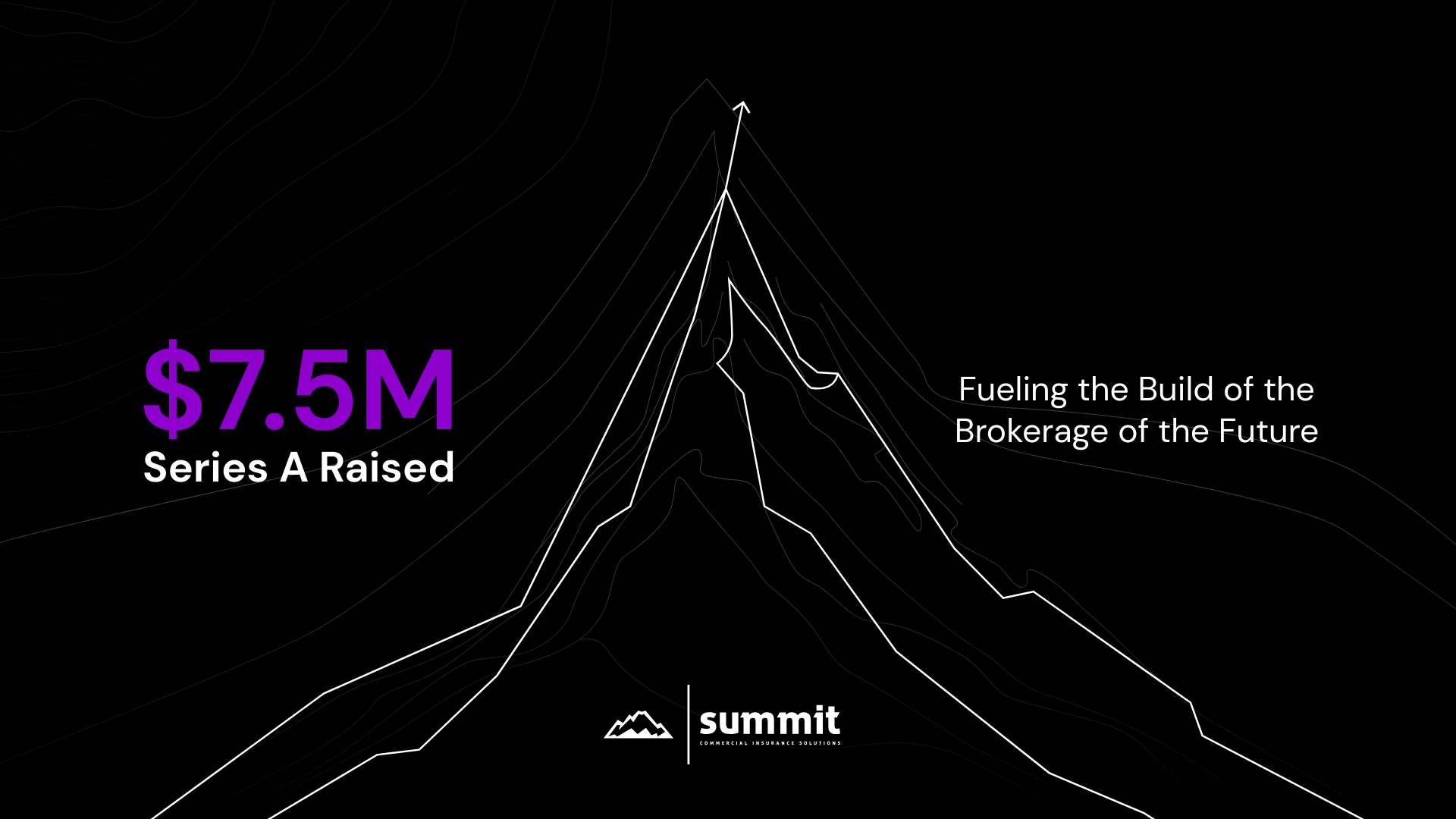.png)
Retail stores face a unique set of risks. These include damage to the physical building, loss of inventory, and unexpected events that can interrupt operations. Retail property insurance is designed to help address these risks.
Understanding how this type of insurance works is important for store owners who want to align their coverage with their operations. It can vary depending on the size of the store, location, and what is being sold.
This guide explains what retail store property insurance is, how it works, and what it typically covers. It also outlines how it differs from other types of business insurance, such as liability coverage.
What Is Retail Store Property Insurance?
Retail store property insurance is a type of commercial insurance that protects the physical assets of a retail business. It covers the building itself (if owned), the contents inside, and certain external features like signage.
This insurance is different from general liability insurance, which covers third-party injuries or damages. Property insurance focuses on damage to the store's physical property caused by specific events, also known as perils. These perils can include fire, vandalism, theft, and certain natural disasters like windstorms or hail.
Retail store property insurance can cover the cost of repairing or replacing damaged items. This may include shelves, equipment, computer systems, and merchandise. Coverage applies whether the damage happens during business hours or after.
- Core Protection: Covers the building (if owned), inventory, equipment, electronics, furniture, fixtures, and signage
- Financial Safety Net: Pays repair or replacement costs after incidents like fire, theft, or storm damage
- Legal Requirement: Often required by landlords for leased spaces and by lenders when financing property
How Commercial Property Insurance Covers Retail Buildings And Contents
Commercial property insurance coverage for retail stores applies to both the building and what's inside it. For building owners, it protects the structure itself – walls, roof, plumbing, and electrical systems. For tenants, it covers improvements made to the space, like custom shelving or lighting fixtures.
The contents portion of the policy protects everything that would fall out if you turned the building upside down and shook it. This includes inventory for sale, display cases, cash registers, computers, and furniture.

Most policies cover damage from fire, lightning, explosion, windstorm, hail, smoke, and vandalism. However, floods and earthquakes typically require separate coverage.
Key Factors That Affect Commercial Building Insurance Coverage Costs
Several factors determine how much you'll pay for commercial building insurance coverage for your retail store.
1. Location And Risk Profile
Where your store is located matters a lot. Stores in areas with high crime rates or frequent natural disasters like hurricanes or wildfires typically pay more. In Canada, a store in downtown Toronto might pay different rates than one in rural Manitoba due to differences in crime rates, weather patterns, and emergency services.
Insurance companies also look at how close your store is to fire hydrants and fire stations. Being nearby can lower your rates.
2. Construction And Building Materials
The materials used to build your store affect your insurance costs. Buildings made of fire-resistant materials like brick, concrete, or steel often qualify for lower rates than those made primarily of wood.
Newer buildings with updated electrical, plumbing, and HVAC systems typically cost less to insure than older structures. The age and condition of your roof also play a big role in determining your premium.
3. Occupancy And Hazards
What you sell affects your rates. A clothing store presents different risks than a jewelry store or electronics shop. High-value merchandise that's easy to steal might increase your premium.
If your retail space is in a building with other businesses, their operations can affect your rates too. For example, sharing a building with a restaurant (with its higher fire risk) might increase your premium.
4. Security And Fire Protection Measures
Having good security and fire protection can lower your insurance costs. These include:
- Sprinkler systems
- Fire alarms connected to monitoring services
- Security cameras
- Motion sensors
- Deadbolt locks
- Gated windows
Insurance companies often offer discounts for these features because they reduce the likelihood of major losses.
5. Claims History And Deductibles
Your history of insurance claims affects your future premiums. Fewer claims generally mean lower rates. The deductible you choose also impacts your premium – a higher deductible usually means a lower premium, but you'll pay more out-of-pocket if you have a claim.
Types Of Commercial Real Estate Insurance Coverage For Retail
Commercial real estate insurance coverage for retail businesses comes in several forms, each protecting different aspects of your operation.
1. Building Coverage
Building coverage protects the physical structure of your retail space. If you own the building, this covers the entire structure including walls, roof, foundation, and built-in systems like plumbing and electrical.
If you lease your space, your landlord typically insures the building itself. However, you might need coverage for any improvements you've made, like built-in shelving, custom lighting, or renovations. These "leasehold improvements" are often your responsibility to insure.
2. Business Personal Property
Business personal property coverage protects items that aren't part of the building structure. This includes:
- Inventory and merchandise
- Furniture and fixtures
- Equipment and tools
- Computers and electronics
- Displays and shelving units
This coverage is essential for all retail businesses, whether you own or lease your space. The coverage limit should reflect the total value of all these items.
3. Business Interruption
If a covered event like a fire or storm forces your store to close temporarily, business interruption coverage helps replace lost income and pays for ongoing expenses like rent, loan payments, and employee salaries.
This coverage typically begins after a waiting period (often 48-72 hours) and continues until your business can reopen or for a maximum period specified in your policy (often 12 months).
4. External Structures And Signage
Many retail businesses have valuable property outside the main building. This might include:
- Outdoor signs and displays
- Fences and gates
- Lighting fixtures
- Landscaping features
Standard policies might provide limited coverage for these items, but you may need additional coverage for high-value external features.
Practical Steps To Lower Your Commercial Insurance Property Coverage Premiums
There are several ways to reduce what you pay for commercial insurance property coverage without sacrificing protection.
1. Implementing Risk Mitigation Upgrades
Installing safety and security features can often earn you discounts on your insurance. These might include:
- Security cameras and alarm systems
- Fire sprinklers and smoke detectors
- Better locks and lighting
- Storm shutters in hurricane-prone areas
Many insurance companies offer premium discounts of 5-15% for these features, often making them worth the investment over time.
2. Maintaining Comprehensive Documentation
Good record-keeping helps in several ways. Keep updated inventory lists with photos and values of your merchandise and equipment. Document all safety procedures and employee training. This information helps insurers assess your risk more accurately and can speed up claims if you have a loss.
Taking regular photos or videos of your store's condition and contents provides valuable evidence if you need to file a claim later.
3. Bundling Or Reviewing Policies Regularly
Many insurance companies offer discounts when you buy multiple policies from them. Combining your property insurance with liability, auto, or workers' compensation coverage often results in lower overall premiums.
Review your coverage annually to make sure it still matches your needs. As your business changes – adding new locations, selling different products, or upgrading equipment – your insurance should change too.
Valuing Your Store: Replacement Cost Vs Actual Cash Value
When insuring your retail store, you'll need to choose how your property will be valued if you have a claim. This choice affects both your premium and how much you'll receive after a loss.
- Replacement Cost: Pays to repair or replace damaged items with new ones of similar quality, without deducting for depreciation. For example, if your 5-year-old computer is stolen, replacement cost coverage pays for a new equivalent model.
- Actual Cash Value: Pays the current value of the item, accounting for depreciation. That 5-year-old computer would be valued at much less than a new one, so your payout would be smaller.
- Functional Replacement Cost: Pays to replace damaged property with less expensive but functionally equivalent items. This might apply to older buildings with features that would be very expensive to replicate exactly.
Replacement cost coverage typically costs more but provides better protection, especially for older buildings or equipment. Actual cash value costs less but might leave you paying significant out-of-pocket costs to fully replace damaged items.
Important Optional Coverages For Retail Operations
Standard commercial property insurance covers many risks, but retail stores often need additional protection. Here are some important optional coverages to consider:
1. Flood And Earthquake Riders
Standard commercial property insurance policies don't cover damage from floods or earthquakes. If your store is in an area prone to these events, consider adding specific coverage.
In Canada, flood risk varies widely by region. Stores near rivers, lakes, or in low-lying areas might face higher flood risks. Similarly, earthquake coverage is particularly important in British Columbia and other seismically active regions.
These coverages are typically available as add-ons to your main policy or as separate policies entirely.
2. Equipment Breakdown
Equipment breakdown coverage (sometimes called boiler and machinery insurance) protects against sudden failures of equipment due to internal causes rather than external events.
This coverage can be valuable for retail stores with:
- Heating and cooling systems
- Refrigeration equipment
- Point-of-sale systems
- Computers and networks
- Security systems
Unlike standard property insurance that covers damage from fire or water, equipment breakdown covers failures due to power surges, motor burnout, or mechanical breakdowns.
3. Spoilage Coverage
For retailers selling perishable goods, spoilage coverage protects against loss of inventory due to power outages, equipment failures, or refrigeration breakdowns.
This coverage is essential for grocery stores, florists, bakeries, and other retailers with temperature-sensitive inventory. It typically covers the cost of the spoiled merchandise and sometimes the loss of income resulting from not being able to sell it.
Making It Work: Protecting Business Continuity
Property insurance does more than just repair or replace damaged items – it helps keep your business running when problems occur.
1. Creating A Business Continuity Plan
A business continuity plan outlines how your retail store will operate during and after a disaster or major disruption. Your insurance coverage is a key part of this plan.
Elements of a good continuity plan include:
- Contact information for key people (employees, suppliers, insurance agent)
- Backup systems for important business data
- Alternate locations where you might operate temporarily
- Steps to take immediately after a disaster
- How to communicate with customers during a disruption
Having this plan ready before a problem occurs helps you recover faster and minimize losses.
2. Coordinating With Landlords And Suppliers
If you lease your retail space, understand what insurance your lease requires you to carry and what your landlord's policy covers. This helps prevent coverage gaps or overlaps.
Similarly, review agreements with suppliers to understand who is responsible for merchandise in transit or stored in your location but not yet paid for. Clear communication about insurance responsibilities helps prevent disputes if a loss occurs.
Moving Forward With Confidence
Commercial property insurance provides essential protection for retail stores against physical damage and related losses. The right coverage helps ensure that a single event doesn't threaten your business's survival.
Every retail store has unique insurance needs based on its location, size, merchandise, and operations. Taking time to understand your options helps you get appropriate coverage at a reasonable cost.
At Summit, we work with retail store owners across Canada to create insurance packages tailored to their specific needs. Our approach combines technology with personal guidance to make the insurance process transparent and straightforward. Get a personalized insurance quote to see how we can help protect your retail business.
FAQs About Retail Store Property Insurance
What is commercial building insurance for a retail store?
Commercial building insurance for a retail store covers the physical structure against damage from fire, storms, vandalism, and other covered perils. It protects the walls, roof, foundation, and built-in systems.
Does commercial property insurance cover theft of inventory?
Yes, standard commercial property insurance typically covers theft of inventory, though coverage depends on your specific policy terms and may require evidence of forced entry or other security measures.
How much commercial property insurance coverage does a small retail store need?
A small retail store typically needs enough coverage to rebuild the structure (if owned) and replace all business contents including inventory, fixtures, and equipment at current prices.
Are display windows and storefronts covered under standard commercial property insurance?
Most commercial property insurance policies cover display windows and storefronts, though some policies have specific limits for glass breakage or may require additional glass coverage.
How does commercial property insurance differ for leased retail spaces?
For leased spaces, the building owner usually insures the main structure while the tenant's commercial property insurance covers their own inventory, equipment, and any improvements made to the space.
What happens if my retail store becomes uninhabitable after a covered event?
If your policy includes business interruption coverage, it can pay for lost income and ongoing expenses while your store is being repaired, helping you stay financially stable during the recovery period.



